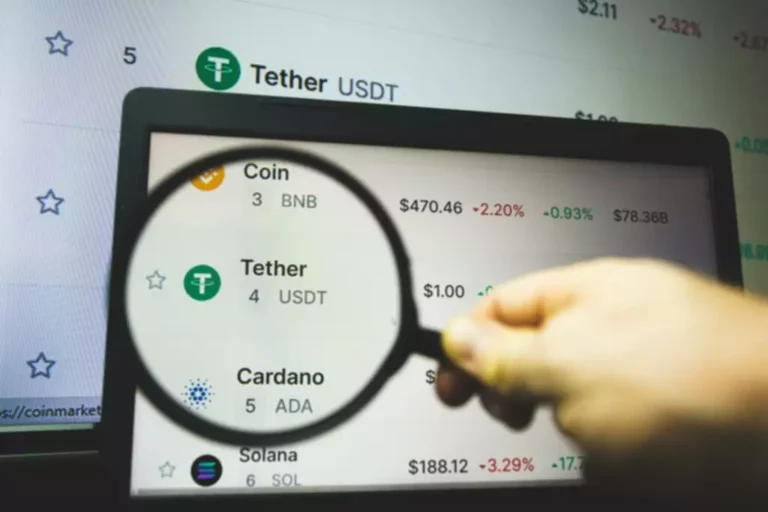Content
They https://www.xcritical.com/ are however different in the purpose they serve, their intended use & main use. Companies can create security tokens and use them the same way a stock, bond, certificate, or other investment asset is used. No, security tokens are not yet available for retail investors on public stock or cryptocurrency exchanges.
Cryptocurrencies vs. crypto tokens
On 10 June 2021, the Basel Committee on Banking Supervision proposed that banks that held cryptocurrency assets must set aside capital to cover all potential losses. For instance, if a bank were to hold bitcoin worth $2 billion, it would be required to set aside enough capital to cover the entire $2 billion. This is a more extreme standard than banks are usually held to when it comes to other assets. The development of crypto technologies is revolutionizing the world of finance, allowing a different perspective on Financial instrument the industry. Crypto tokens, being one of the important elements of the crypto space, now perform many different functions and, unlike crypto coins, give more advantages within the framework of business creation. Historically, a token was a monetary equivalent issued by private companies and individuals as a substitute for small coins when states could not mint enough money.

The future of cryptocurrency tokens
A decentralized exchange (DEX) is a type of exchange that specializes in peer-to-peer transactions of cryptocurrencies and digital assets. Unlike centralized exchanges (CEXs), DEXs do not require a trusted third party, or intermediary, to facilitate the exchange of cryptoassets. A crypto token is a representation of an asset what is the difference between token vs cryptocurrency or interest that has been tokenized on an existing cryptocurrency’s blockchain. Crypto tokens and cryptocurrencies share many similarities, but cryptocurrencies are the native asset of a blockchain.
Token vs Coin: Examples of Coins
They are not explicitly tied to ownership or rights of underlying assets. On the other hand, security tokens are specifically created to represent ownership or rights to assets. There are two different types of crypto tokens that exist in the ICO sphere — utility tokens and security tokens. A security token is a digital asset that represents a slice of ownership of or rights to an asset or a company.
Safeguarding Healthcare Data: Why Tokenization is Set to Hit $13.20 Billion by 2032
These two assets work in tandem to create a better decentralized experience for everyone. For decentralized peer-to-peer transfer of digital assets, you will need to rely on the native coin of a blockchain network. Put simply, the question of coins or tokens depends very much on the specific use-case and the blockchain you want to use.
The most common type of crypto tokens are ERC-20 tokens on the Ethereum blockchain, but other platforms have their own tokenization standards (like BEP-20 on Binance Smart Chain, and SPL on Solana). The ERC-20 standard, for example, makes it possible for tokens to be easily integrated in an Ethereum wallet and used across Ethereum-based DApps. Running nodes costs money, both in the form of hardware and electricity. So blockchain networks need a financial reward system to incentivize people to operate nodes. To compensate node operators for their costs, and the work of processing, validating, and adding new transactions, each blockchain will have a corresponding cryptocurrency.
- Cryptocurrencies, such as Bitcoin and Ethereum, are designed to be used as decentralized currencies or payment methods.
- DeFi tokens are permission for a user to access certain services of an application or an entire organization, also built on a blockchain.
- Put simply, smart contracts allow the easy creation of digital assets which are all interoperable on a specific network.
- Today, multiple blockchains support fungible and non-fungible tokens, such as Solana, Cardano, and Tezos.
Also, blockchain networks usually require users to pay a gas fee or transaction fee. This fee is used to compensate miners or validators who confirm the transaction on the network. Some cryptocurrencies, such as Bitcoin, have a limited supply, and their circulation can only be increased by mining.
Tokens are often used as a medium of exchange or to represent assets, rights, or access to certain services or features within a specific ecosystem. To explain in simple terms, a crypto token is a record on a blockchain that confirms rights to something, such as the ownership of an asset. In this sense, cryptocurrencies are also tokens, but not all tokens are digital currencies.
In the context of web3, fungible tokens most commonly appear as utility tokens or stablecoins. Where utility tokens provide some sort of utility for users of a web3 protocol. The biggest difference between a cryptocurrency ICO and a stock initial public offering (“IPO”) is the regulatory oversight.
They can also take the form of algorithmic stablecoins (with an algorithm used to stabilize the volatility of the token’s value). While some of these stablecoins may qualify as financial instruments or electronic money according to some financial regulators, others may go beyond regulation and have a different status. Today’s cryptocurrency world is characterized by a wide variety of coins and tokens, from payment cryptocurrencies such as Bitcoin and ETH to well-known NFTs. Knowing how to navigate crypto tokens is an important skill for navigating the Web3 space, which is one of the key development areas of crypto technologies and concepts that form an entire ecosystem. Below are the most common types of crypto tokens, each with its own uniqueness.

Ultimately, time will tell whether this becomes the future of funding businesses or merely a “get rich” scheme by issuers. While cryptocurrencies may seem overwhelming at first, it’s undeniable that blockchain technology is making the whole concept of “being your own bank” completely possible. With the innovation of tokens, cryptocurrencies are not just useful as a store or transfer of value, but also as financial instruments such as derivatives and representations of tangible assets.
In addition, non-algorithmic stablecoins such as Tether are susceptible to de-pegging, as was the case in June 2022, demonstrating that even coins that should provide greater certainty are at risk. Tokens are identified by their name, which you can click on to find out more information about that specific token. This view includes attributes such as the token’s symbol and underlying contract address.
A digital wallet is a software program that stores private and public keys and interacts with various blockchain to enable users to send and receive digital currencies and monitor their balance. In summary, crypto tokens are digital assets that represent ownership or value on a blockchain. Many blockchains are decentralized, and smart contracts allow for interoperable tokens and self-executing code. Using these two innovations, decentralized exchanges went from pipe-dream to reality. Put simply, smart contracts allow the easy creation of digital assets which are all interoperable on a specific network. This means that swapping, lending, and transferring these tokens is much easier and more secure than swapping different crypto coins.
